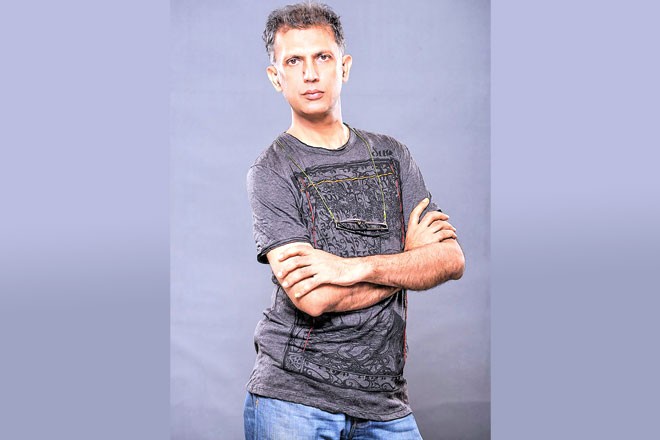
The designer talks about the state of fashion graduates, his latest lawn collection and what keeps his brand going despite there being total saturation in the market

instep interview
He was one of the first designers to enter the battle of designer lawn almost two decades ago and because of that, Yahsir Waheed is an established name in the industry. He has carved a strong niche for himself and has managed to survive amidst several big names that entered the business after him. What makes Waheed’s brand stand out is his consistency and commitment to customers. Alongside designing clothes, he has also been teaching ‘Fashion Design’ at the Pakistan School of Fashion Design (PSFD) since its foundation in 1994. Waheed is of the view that though the institute produces over 50 fashion designers each year, it becomes difficult for them to be the next big thing since the fashion council is not open to young designers anymore.
Instep caught up with the designer to find out about his upcoming collection (that will be showcased from February 20 till February 23 in Karachi) and much more. Here are a few excerpts from our conversation with the designer…
Instep: Tell us about your upcoming collection. What are the various print inspirations this year and in what ways it is going to be different from other collections that are being launched this season?
Yahsir Waheed (YW): There are 17 designs in this collection and each design has two coordinated designs with customized sleeves. So there are unlimited variations. Customers can play around with the coordinated designs and no two shirts will be the same. Also the embroideries that we sell are not imposed on the customer. Women can choose according to their taste whether they want to buy an embroidered piece or not. Easy on pocket, easy on style!
Instep: There are a lot of options available in the market. How do you refresh your collection each year to avoid redundancy?
YW: Since we sell directly to our customers through exhibitions, we are constantly in touch with them. We personally hear their views and find out what they need and like. This input helps us keep evolving and give a product that the customer wants.
Instep: Designer lawn is all over the place these days; what keeps your brand going?
YW: This is our 19th year in the business so we have really seen it all, and survived it too. I think understanding the customer and what they need is what makes us going. Our biggest strength is that we keep it simple, we do not believe in giving our customers a 12 piece jigsaw puzzle ensemble.
Instep: Once a collection is launched, replicas come out within a week’s time. How does that affect your business?
YW: All our designs are copyrighted. However we have been copied since 1999 by small time manufacturers as well as big textile houses. Unless all the brands form a consortium and fight against this menace, things will not change.
Instep: You bring out your collection once a year and never appear in fashion shows or so. What is it that keeps your business running throughout the year?
YW: We have been a private label and are involved in every detail and process of designing and manufacturing our product alongside marketing and selling it. This year we are widening our horizons and looking for more creative opportunities. We plan to bring in new collections in mid-summer and also a new prêt line.
Instep: You’ve been in the business for 20 years; how would you evaluate the industry’s evolution?
YW: Actually it’s been more than 20 years and yes the industry has evolved tremendously. The domestic market has grown and there is a huge middle class. So one observes textile manufacturers are now coming in the domestic market, instead of exports only. However, price and design wise it is safe fashion, heavy on prints and embroideries. I would like to eventually see designers offering new cuts and silhouettes. The great thing is that women’s prêt is here to stay, and you can’t beat the feeling of being able to pick up a garment off the peg, and being able to wear it the same evening.
Instep: Being a teacher at PIFD, where do you see the industry going? Do you think the standard is going down compared to the past or do we have enough new talent coming up? How many of your graduates are actually part of mainstream fashion?
YW: I feel not many people realise the role Pakistan Institute of Fashion & Design (PIFD) has played in the fashion industry of Pakistan. We have a class of 50 plus fashion design students who graduate every year and we have a 100 per cent employment ratio. Our graduates are working with some of the most notable brands including Sana Safinaz, Élan, Sapphire and Generation. In fact our graduates are working in almost every design house and high street brand.
New talent is there. However the fashion councils, lately, have not been inviting young designers like they did initially with Ali Xeeshan or Mohsin Ali. So it has become more difficult to be the next bright young designer.
Instep: What would be your advice for the new lot of designers that are graduating in the field?
YW: Work with someone that you admire and you can practice your craft, do not keep jumping jobs. Find and explore what kind of designs you would like to design. It is becoming extremely difficult to be an entrepreneur but follow your dream.